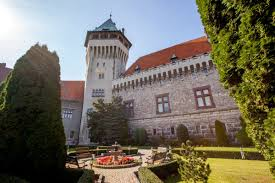The word blueprint refers to the practice of dyeing fabrics blue with indigo and decorating it by wax-resisting print, using dye – resisting mix preventing the colouring at the places of ornamentation. Blueprint has been an important technique in Slovakian as well as European traditions of textile decoration. It had been brought into Slovakia from the Netherlands and Germany during the eighteenth century. Initially blueprint was adapted in bourgeois circles. In the nineteenth century blueprint became a common element of folk textiles and dresses and developed into an exceptional richness of local forms adjusted to the tastes of rural inhabitants.
They used to order blueprint fabrics in the workshops or to buy them at the fairs. Even in the mid-twentieth century regional diversity of blueprint ornaments and the number of blueprint workshops in Slovakia was high in comparison to other countries of Central Europe. More than thirty active workshops produced blueprint fabrics for rural areas where people still used to wear traditional dresses. The activities of workshops had gradually been reduced due to decreasing use of blueprint in dresses and interiors of rural households. The inhibition of private enterprise during the socialist period contributed to this reduction.
Consequently, the production of blueprint fabrics became the domain of cooperatives and the Centre for Folk Art Production that has intensively supported blueprint production until right up to today. The Centre has cooperated with the manufacturers and reinforced blueprint tradition as well as innovative forms of blueprint design.
Blueprint dyeing, a traditional Slovak cloth dyeing technique, has been admitted to the UNESCO intangible world heritage list, in Port Louis, Mauritius.
We are glad to provide you our services.
 +421 948 365 187
+421 948 365 187 info@realdealplus.com
info@realdealplus.com



